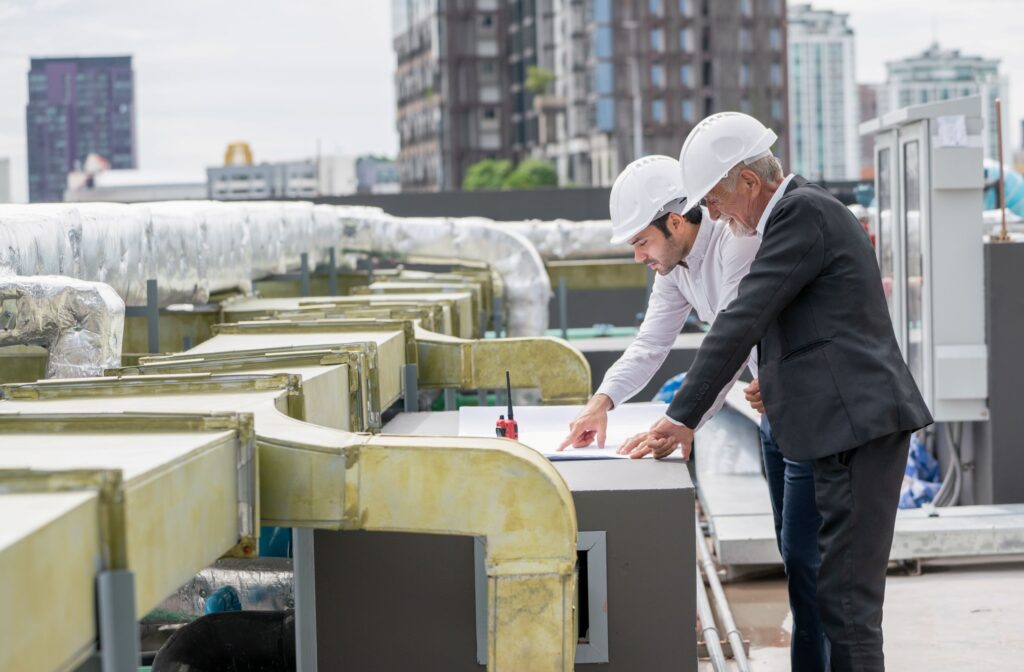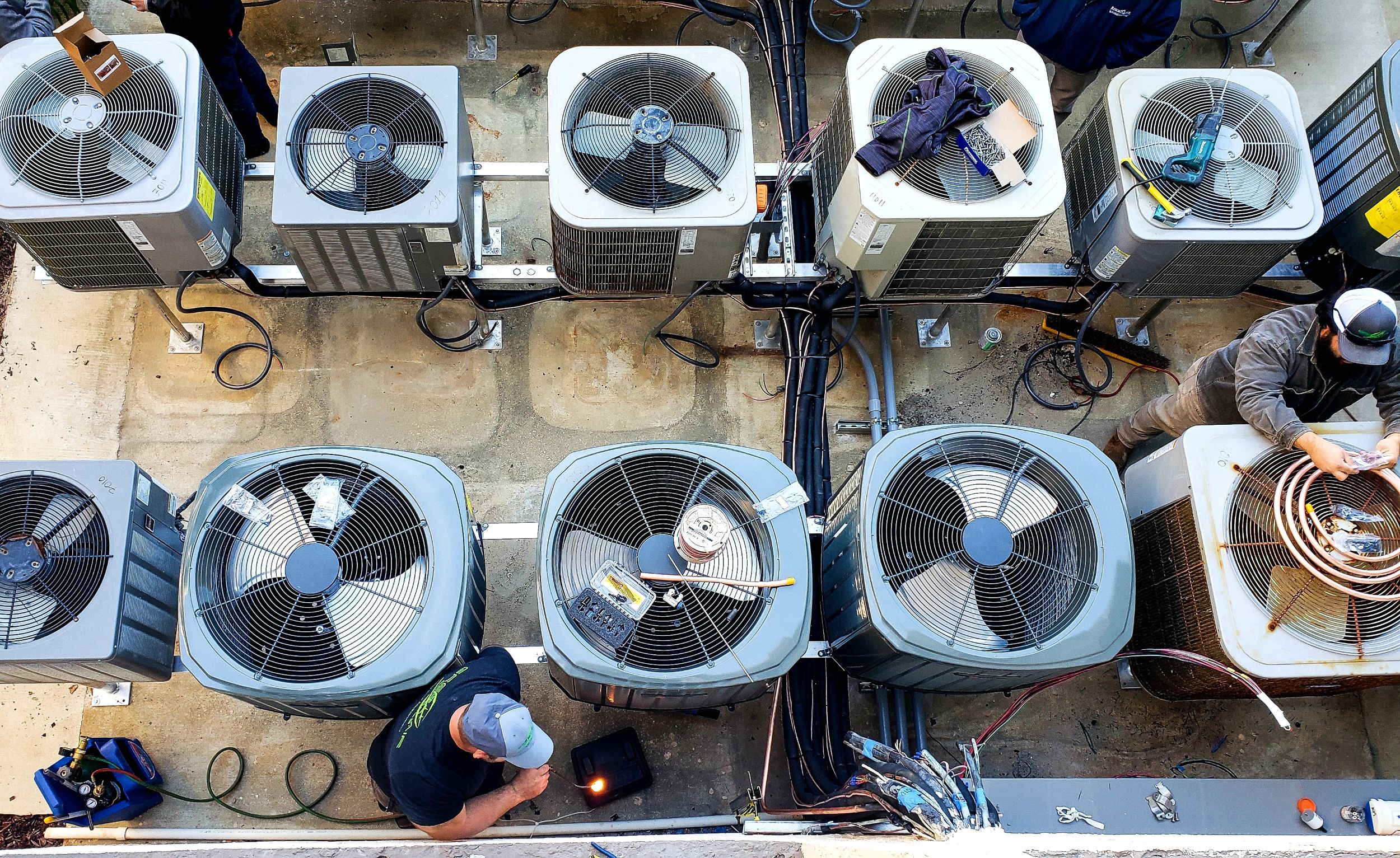Thinking about upgrading your HVAC system in St. Clair County? You’re not alone! Whether you’re building from the ground up or finally ditching that dinosaur of a furnace, one thing stands between you and year-round comfort: building codes. That’s right—before you install anything, you’ve got to get familiar with HVAC installation rules, permits, and inspections. And trust us, skipping this step can get you into some hot (or cold!) water.
Here at S&P Heating, we’ve walked countless homeowners through the maze of HVAC permit requirements, local code quirks, and mechanical inspections. The good news? With the right prep and a little help, you can breeze through your installation without breaking a sweat.
Let’s break it down so you can get your HVAC project done right the first time.
Why Building Codes Matter in HVAC Installation
First, let’s get clear on why this matters. Building codes aren’t just bureaucratic red tape—they’re designed to ensure systems are safe, energy-efficient, and properly integrated into your home.
Skipping steps like HVAC system approval or hiring an unlicensed contractor can lead to:
- Delays in project completion
- Failed inspections
- Voided warranties
- Hefty fines from the county
So, before you start shopping for new ductwork or that shiny high-SEER system, here’s what you need to know.
Step One: Understanding HVAC Permit Requirements
Any new HVAC installation in St. Clair County requires a permit, and often, more than one.
Here’s what typically requires permitting:
- Installing a new furnace or AC unit
- Replacing or rerouting ductwork
- Installing gas or electrical lines
- Modifying venting systems
- Changing system type (e.g., switching from forced air to mini-split)
The HVAC permit requirements vary depending on whether it’s a new build or an upgrade, so always check with the St. Clair County building department. Your contractor (ahem, a licensed HVAC installer in St. Clair County) should handle this for you, but it never hurts to ask.
Mechanical Code Compliance: What the County Looks For

Once your permit is submitted, your project must meet mechanical code compliance standards. This isn’t just about installing a unit and calling it a day—there are detailed requirements that your HVAC system must meet, including:
🔹 Venting Regulations
Gas furnaces and water heaters need proper ventilation to avoid carbon monoxide risks. Improper venting is a significant inspection fail.
🔹 Ductwork Insulation Standards
Undersized or poorly insulated ductwork isn’t just inefficient—it’s non-compliant. Insulation values and sealing methods must meet local energy codes.
🔹 HVAC Setback Requirements
You can’t place your outdoor unit just anywhere. The county has HVAC setback requirements that dictate how close a system can be to property lines, windows, or neighboring homes.
🔹 SEER Code Requirements
Your new unit must meet energy efficiency rating codes for Michigan. Most homes must now install systems with a SEER2 rating that aligns with updated DOE standards.
HVAC Installation in New Construction: Plan Ahead or Fall Behind
If you’re building a new home or an addition, HVAC planning should happen early, way before drywall goes up. You’ll need to provide:
- An HVAC blueprint review with unit specs and duct layouts
- Ventilation plans that meet fresh air exchange codes
- Placement details for thermostats, vents, and returns
This is part of new construction HVAC planning, and it gets reviewed during the initial permit approval process. Failing to include it upfront can delay framing, inspections, or even occupancy certificates.
The HVAC Inspection Checklist (and How to Pass It)
After your system is installed, the county will send an inspector to make sure everything matches the permit and codebook.
Here’s what they’re usually looking for:
- Correct equipment placement and secure mounting
- Proper electrical connections
- Safe and compliant vent routing
- Accurate refrigerant line installation
- Duct sealing and airflow verification
- Matching equipment labels to what’s listed on the permit
If your contractor is on their game, you’ll fly through this process. But if corners were cut—or codes weren’t followed—get ready for inspection red flags and rework fees.
Why a Licensed HVAC Installer in St. Clair County Matters
We can’t stress this enough: Don’t DIY your HVAC install.
A licensed HVAC installer in St. Clair County understands the mechanical code inside and out. They:
- Pull and close permits properly
- Know local HVAC zoning rules
- Handle county inspections with confidence
- Avoid common residential HVAC code violations
Sure, your cousin’s friend might “know a guy,” but unless that guy has a license and experience in St. Clair County, you’re risking way more than a system failure. You’re risking fines, delays, and—worst of all—having to rip it all out and start again.
Common Mistakes That Lead to Failed Inspections
Let’s talk about where things usually go sideways. We’ve seen it all, but these are the top missteps that delay projects or require costly fixes:
No Permit Pulled
Yes, people still try this. Spoiler: You’ll get caught. And yes, you’ll have to pull a retroactive permit, which is way more expensive.
Wrong Duct Sizing
Undersized ducts = pressure imbalances, noise, and hot/cold spots. It’s a classic fail that shows up immediately during testing.
Poor Ventilation Planning
Venting into an attic or crawl space? Big no-no. This leads to moisture problems and fails inspections every time.
Improper Electrical Work
Using the wrong circuit or mismatching wire sizes can be dangerous, and it’ll stop your project in its tracks.
Timing Your Installation Right: Season & Scheduling Tips
Here’s a hot tip (literally): don’t wait until July or January to install your system. Those are the busiest times for HVAC companies and the slowest for permit approvals.
Try scheduling your HVAC installation in spring or fall, when contractors have more availability, and inspectors aren’t juggling emergency calls.
Plus, some manufacturers offer off-season rebates—bonus!
Let S&P Heating Handle the Paperwork (and Everything Else)

We get it—building codes can feel overwhelming. That’s where S&P Heating comes in. We’ve been through every twist, update, and exception in the St. Clair County codebook. Our team handles your HVAC permit requirements, ensures mechanical code compliance, and makes sure you pass inspection the first time.
Don’t leave your installation to chance. Let us handle the technical stuff so you can focus on enjoying your climate-controlled comfort.
FAQ: Beyond the Basics of HVAC Installation
Do you need an HVAC permit for replacing just the outdoor AC condenser unit?
Yes, in most cases, you do. Even if you’re only replacing the condenser and keeping the indoor unit, a permit is typically required. That’s because replacing equipment still affects system capacity, refrigerant type, and energy code compliance, and all of that needs to be verified by a county inspector.
Can you install a new HVAC system before getting final approval on a home addition?
Nope—not if you want to stay compliant. HVAC systems must be approved as part of the overall permit process for an addition or renovation. Jumping ahead can lead to problems during final inspection and could prevent you from receiving a certificate of occupancy.
Will you need multiple inspections if you’re installing ductwork and new HVAC equipment?
Yes, usually at least two. One inspection happens during the rough-in phase when ductwork is installed but before walls are closed up. The second is after the system is fully installed and operational. Some projects may even require a third inspection if gas lines or structural changes are involved.
Up Next: Get Winter-Ready!
❄️ How to Prepare for Furnace Repairs Before Winter Hits St. Clair County
If you’re thinking ahead to the cold season, our next article walks you through pre-winter HVAC prep, furnace inspection checklists, and how to avoid last-minute repair scrambles. Don’t miss this seasonal survival guide!



